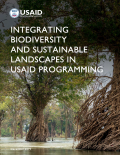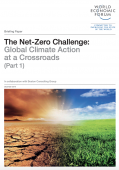
This paper examines the extent to which addressing climate-related risks and supporting sustainable finance fit into the current set of central bank mandates and objectives.
This report explores the ways in which gender inequality is a critical factor in understanding vulnerability and resilience efforts concerning climate change in Sahel, and how policy and state institutions can improve gender equity and climate resilience.

This report critically assesses how peacebuilding programming can also produce adaptation benefits (and vice versa), so that interventions simultaneously contribute to reduced intercommunal conflict and strengthened resilience to a range of shocks and stresses, including droughts, floods, and rainfall variability.

The integration of biodiversity and sustainable landscapes objectives and considerations has the potential to increase the sustainability of programming, amplify results, and save costs. However, at other times, separate activities may make more sense in contexts where programmatic goals and requirements are not a natural fit. This document explores both the benefits and potential challenges of integrating biodiversity and sustainable landscapes objectives to help project staff make informed choices about whether and how to integrate.

The paper is the first in a two-part series on The Net-Zero Challenge, which examines what corporations, governments, and civil society have achieved since the Paris Agreement was drafted in 2015 and assesses the current state of global climate action. While there are clear signs of incremental progress, climate action needs to move at a much greater scale and faster pace.
